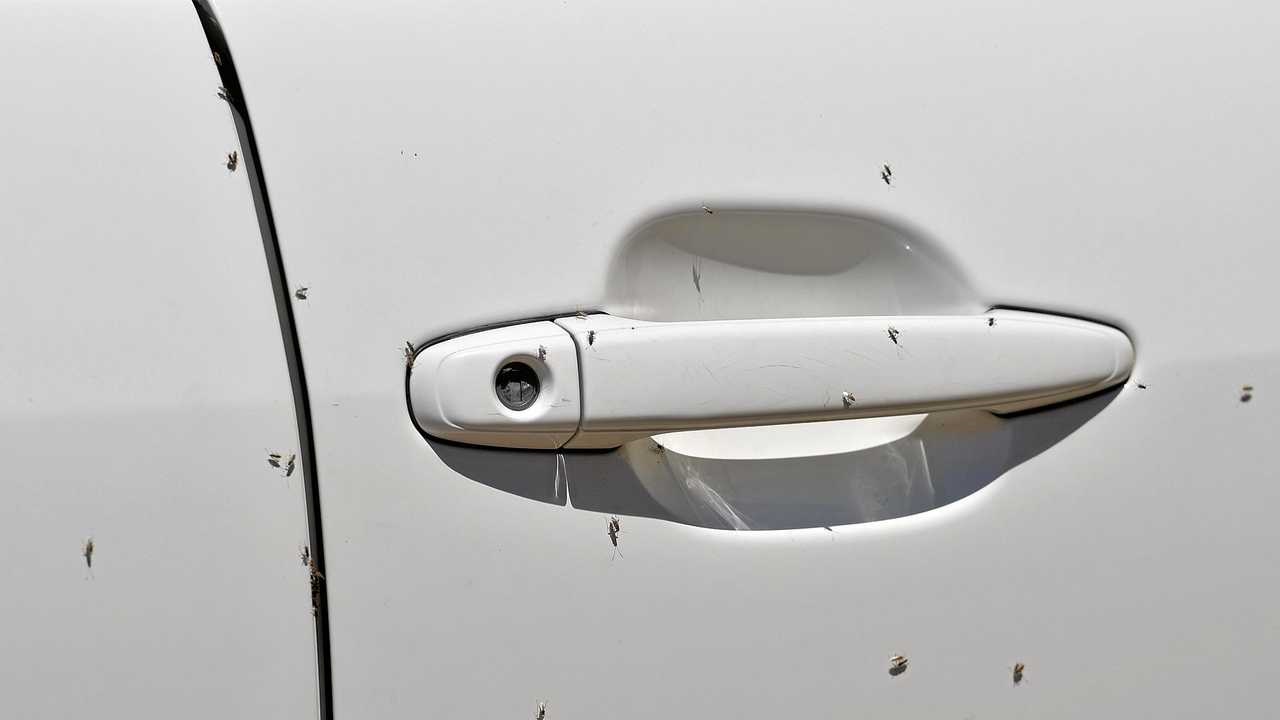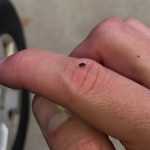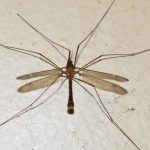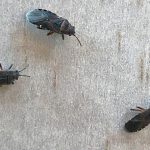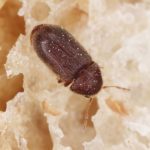Do tiny black bugs crawling across your dashboard have you feeling frustrated? Getting rid of them can be difficult, but fear not.
We’ll discuss the best ways to eliminate these pests from your vehicle and keep them away for good. First, determine the kind of bug you are dealing with.
Size and shape vary greatly, so it’s important to know what kind of bug you’re dealing with before trying removal techniques. Vacuuming is often the most convenient and cost-effective way to get small bugs out of your car – use a handheld vacuum cleaner to quickly reach crevices and cracks in your vehicle’s interior trim.
Wiping down surfaces with a damp cloth will also help eliminate remaining bugs or eggs that may have survived vacuuming. Insecticides or pesticides specifically intended for use on automobiles can also be used as a last resort due to their potential toxicity.
They can help kill any remaining bugs or eggs present in your vehicle. Finally, prevent further infestations by tightly sealing food items and regularly cleaning out garbage from your car.
Follow these simple guidelines, and you can quickly get tiny black bugs out of your car and keep them away for good.
Identifying the Type of Bug
Contents
- 1 Identifying the Type of Bug
- 2 Cleaning the Interior of the Car
- 3 Using Pest Control Sprays
- 4 Natural Remedies for Getting Rid of Tiny Black Bugs
- 5 Preventing Future Infestations
- 6 Vacuuming and Disinfecting Your Car Regularly
- 7 Avoid Leaving Food or Drinks in Your Car
- 8 Tips for Safely Using Pest Control Sprays
- 9 Conclusion
If you’ve noticed tiny black bugs in your car, it’s essential to identify the type of bug before taking steps to get rid of them.
Carpet beetles, spider beetles, black carpet beetles, springtails, and fleas are some common culprits. Each species has unique characteristics and behaviors, so making an accurate diagnosis before starting is essential.
Here is a guide on how to spot each kind of bug: Carpet beetles are small, black or brown insects about 1/8 inch long with white or yellowish scales on their backs.
They feed on natural fibers such as wool and cotton and can be found in carpets and upholstery. Black carpet beetles look similar to regular carpet beetles but have solid black scales on their backs instead.
They also feed on natural fibers found in carpets and other fabric items in your vehicle. Springtails are small wingless insects that are commonly found in moist environments.
These bugs are about 1/16 inch long with dark-colored bodies and can often be spotted in damp or humid areas of your car, like floor mats or under the seats. Fleas are also possible culprits; these tiny black or brown insects feed on the blood of animals and humans.
Although they’re usually associated with pets, they can infest cars if pets have been transported recently.
Cleaning the Interior of the Car
Don’t panic when dealing with pesky little black bugs in your car.
You can easily remove them from your vehicle’s interior with simple steps. Start by vacuuming the upholstery and carpets to remove dirt, crumbs, and debris.
To disinfect the surfaces where the bugs are found, use a mixture of warm water and mild dish soap. If you have leather seats, use a leather cleaner and conditioner the manufacturer recommends to clean and protect them.
Finally, clean your car’s windows, dashboard, and all other hard surfaces using a microfiber cloth and cleaning solution.
Using Pest Control Sprays
Don’t worry – pest control sprays are a great way to get rid of them quickly and effectively.
Follow these five simple steps for an insect-free ride. Start by vacuuming the interior to remove any visible bugs and debris.
Park your car in a well-ventilated area, then spray the insecticide according to the label instructions. Avoid spraying surfaces that may come into contact with your skin or mouth, as it can be harmful if ingested.
Then, open the windows and let the product dry completely before driving again. If necessary, repeat this process until all bugs are eliminated.
Always test a small area first to ensure it won’t cause any damage or discoloration before using a new product.
Natural Remedies for Getting Rid of Tiny Black Bugs
There are natural remedies that can help you evict them.
Essential oils, vinegar, baking soda, and salt are all effective methods for getting rid of these pesky insects. Essential oils such as peppermint, tea tree, and eucalyptus oil can repel bugs.
To use these oils, mix a few drops with water in a spray bottle and spray the affected areas in your car. Not only will this get rid of the bugs, but it will also leave a pleasant scent behind.
Vinegar is another excellent natural remedy for removing tiny black bugs in your car. Mix equal parts vinegar and water in a spray bottle and spray the affected areas; vinegar’s strong antibacterial and antifungal properties will kill the bugs and prevent them from returning.
Baking soda and salt can also eliminate tiny black bugs in your car. Sprinkle a mixture of baking soda and salt on the affected areas.
Natural remedies are an excellent way to get rid of tiny black bugs in your car safely, easily, affordably, and without harming the environment.
Preventing Future Infestations
A bug-free car is within reach, and it doesn’t have to be expensive or damaging to the environment.
Clean up any food particles, crumbs, and spills immediately; vacuum your car regularly; use an insect repellent inside your car; store food properly in airtight containers; park your car away from areas with a lot of insects; and keep your car dry with a dehumidifier.
Vacuuming and Disinfecting Your Car Regularly
Vacuuming is a great way to eliminate food particles, dirt, and grime that attract bugs and pests. Before starting the process, remove all the larger debris from your car, such as papers, wrappers, or other unnecessary items.
Use a crevice tool or an upholstery brush to reach the hard-to-reach areas like the corners of the seats or underneath the dashboard.
To kill any bugs hiding in the seats or carpet, use a commercial disinfectant spray or make one at home using equal parts of water and vinegar.
You can also use insect-repellent sprays or sachets in your car to keep bugs at bay.
Avoid Leaving Food or Drinks in Your Car
To ensure your vehicle remains pest-free, it’s essential to take preventative measures. One of the most important steps is to avoid leaving food or drinks in your car.
Think of it like a game of hide and seek: If you leave sugary snacks or drinks in your car, you give pests the green light to come and party. Never leave food or drinks in your car to avoid this, and clean up any spills immediately.
Tips for Safely Using Pest Control Sprays
Pest control sprays can help you get rid of them. But be careful: these chemicals can be harmful if misused. Here are five tips to ensure you safely and effectively use pest control sprays in your car:
Read the Label
Before using any pesticide, please read the label instructions carefully and follow them strictly. This will provide important information on dosage, application, safety precautions, and possible side effects.
Wear Protective Clothing
To prevent skin contact or inhalation of fumes, wearing protective clothing such as gloves, long-sleeved shirts, and long pants is essential.
Ventilate the Car
Ensure your car is ventilated while spraying by opening doors and windows for free air flow so that fumes do not accumulate inside the vehicle.
Don’t Over-spray
Avoid spraying excessive pesticides, which may cause indoor pollution and eventually harm you or your passengers.
Keep Pets and Children Away
Keep pets and children away from the sprayed car for at least 24 hours until all fumes have dissipated completely. Pesticides can be dangerous to pets and children, so it is important to keep them away until they are safe.
Conclusion
If you’re dealing with tiny black bugs in your car, don’t panic.
With a few simple steps, you can eliminate them and keep them away for good. First, identify the type of bug to ensure you take the correct measures.
Then, vaporize and wipe down surfaces with a damp cloth to remove them from your vehicle. As a last resort, insecticides or pesticides designed for use on automobiles can be used – but only after considering their potential toxicities.
Natural remedies such as essential oils, vinegar, baking soda, and salt are effective alternatives that won’t damage the environment. To avoid future infestations, tightly seal food items; regularly sweep out garbage; vacuum and disinfect your vehicle; avoid leaving food or drinks inside; and use an insect repellent.
When using pest control sprays, read the instructions carefully; wear waterproof clothing, ventilate the car, and keep pets and children away until all fumes have dissipated completely.

